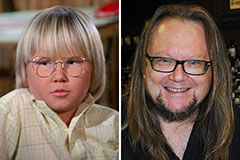Improve Your Brand with 3D Furniture and Product Animation Services
Intro:
In today's competitive digital landscape, businesses must discover ingenious ways to stand out. One such technique is through making use of 3D furniture and product animation. Whether you're in the furniture industry or associated with product design, animation uses a visually captivating way to engage your audience and boost your brand. At 3D Furniture Rendering, we provide top quality 3D animation services that bring your products to life, showcasing them in such a way that captures attention and generates interest. This article explores how furniture animation and 3D product animation can benefit your business and help you communicate your product's features effectively.
What is 3D Furniture and Product Animation?
3D furniture and product animation includes creating lifelike, dynamic representations of physical products through computer-generated imagery (CGI). These animations are not fixed; they are designed to mimic real-world movements, interactions, and lighting, providing an extremely detailed, realistic experience. When applied to furniture, this animation showcases how pieces look in different settings, stressing the design, texture, and functionality. Likewise, 3D product animation serves the same purpose for different consumer goods, helping prospective customers visualise the product before buying.
Why Choose 3D Furniture and Product Animation for Your Business?
There are numerous reasons why businesses choose 3D animation as part of their marketing technique. Initially, these animations offer an interactive and immersive experience that can draw customers in. Here's how they can positively impact your brand:
1. Improved Visualisation: For furniture businesses, furniture animation enables customers to visualise how products will look in various settings, whether it's in a living-room, office, or dining location. The 3D animation can be revealed from multiple angles, letting customers get a comprehensive view of the design. It's especially beneficial for online stores where customers can not physically touch or see the product before purchasing.
2. Showcasing Product Features: With 3D product animation, you can display intricate functions or functionalities that might be hard to convey through still images or written descriptions. For example, an animated demonstration of how a multi-functional piece of furniture transforms or how a product operates can help customers comprehend its value better.
3. Cost-Effective Marketing Tool: Traditional product photoshoots and videos can be expensive and time-consuming. On the other hand, 3D product animation can be modified easily to show a product in numerous environments, angles, and utilizes, all without requiring to stage multiple shoots. This makes it an effective and cost-efficient option for businesses.
4. Higher Engagement and Conversion Rates: Studies reveal that interactive and visually appealing content, such as 3D furniture animation, considerably improves customer engagement. These animations offer an experience that feels more personalised and interactive, encouraging potential customers to invest more time on your site and, eventually, increasing conversion rates.
5. Better Communication with Clients: For interior designers or designers working with furniture or products, animations allow for clearer communication with customers. Instead of counting on sketches or concepts, 3D animations can reveal clients exactly how a product will look in a specific area, helping them make decisions more confidently.
The Process of Creating 3D Furniture and Product Animations
Creating a high-quality 3D animation includes a careful procedure that combines artistic ability with technical competence. Here's a summary of the typical stages:
1. Concept Development: The first step is comprehending the product and its distinct functions. We work carefully with clients to 3D Product Animation specify their requirements, target audience, and vision for the animation. This step makes sure that the final product aligns with the brand's image and marketing objectives.
2. 3D Modelling: In this phase, a 3D model of the product is created utilizing specialised software. The design is a virtual representation of the physical product, with every information carefully reproduced to ensure it looks accurate.
3. Texturing and Materials: The next action is applying textures, colours, and materials to the 3D design. This is where the animation begins to look realistic, with textures looking like actual surface areas, such as wood, fabric, or metal. For furniture animation, this stage guarantees the piece looks lifelike and appealing to possible customers.
4. Lighting and Rendering: Lighting plays an essential role in bringing a 3D product animation to life. Various lighting setups are checked to enhance the state of mind and realism of the animation. After that, the rendering process starts, where the final frames of the animation are created.
5. Animation and Visual Effects: The actual animation starts, where the product is made to move or alter in manner ins which highlight its features. Whether it's a piece of furniture folding, turning, or being placed in a space, this stage brings the product to life. Visual results, such as shadows, reflections, and background elements, are also added to boost realism.
6. Final Touches: Once the animation is complete, any final adjustments are made to make sure the product's design and features are effectively showcased. The final animation is then exported in the needed format for distribution across digital platforms.
Applications of 3D Furniture and Product Animation
The flexibility of 3D animation makes it appropriate in numerous industries, particularly in retail and product marketing. A few of the common uses include:
1. E-commerce Websites: Online stores can use furniture animation to display their products in different settings and highlight their design information, making sure customers have a clear understanding of what they're purchasing.
2. Marketing and Advertising: 3D product animation can be used in ads, both online and offline. Animated product demonstrations or ads help businesses attract attention, stand out in crowded markets, and boost customer interest.
3. Interior Design Projects: Interior designers can incorporate 3D animations into their discussions, providing customers with a visualisation of how their furniture choices will search in their office or homes. This helps clients make informed decisions.
4. Product Demonstrations: If you're presenting a brand-new product or function, a 3D product animation is a perfect tool for showing how the product works. Whether it's an intricate furniture piece with multiple functions or a state-of-the-art gizmo, animation makes it easier to show off every detail.
Conclusion:
Incorporating 3D furniture and product animation into your marketing strategy can be a game-changer for your business. It not only boosts the visual appeal of your products however likewise offers your customers with a more interactive and immersive experience. Whether you're a furniture seller, product manufacturer, or interior designer, 3D animation allows you to display your products in a manner that is both engaging and useful. By using your customers a lifelike sneak peek of your products, you can build trust, boost conversions, and remain ahead of the competitors.
Investing in 3D furniture and product animation is an action toward future-proofing your brand and ensuring it stands apart in a significantly digital world. If you're aiming to take your business to the next level, this ingenious tool is an important part of your marketing arsenal.
 Luke Perry Then & Now!
Luke Perry Then & Now! Ross Bagley Then & Now!
Ross Bagley Then & Now! Robbie Rist Then & Now!
Robbie Rist Then & Now! Suri Cruise Then & Now!
Suri Cruise Then & Now! Ryan Phillippe Then & Now!
Ryan Phillippe Then & Now!